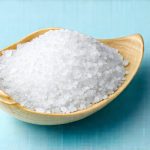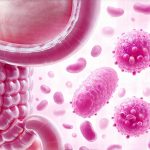The human digestive system is an incredibly complex and responsive machine, constantly adjusting to the inputs we provide it. We often take for granted the relatively stable output – our stool – until something changes. A sudden shift in stool consistency, color, or frequency can be alarming, prompting questions about what’s happening within our bodies. While many factors influence bowel movements, dietary choices are paramount among them. Most people intuitively understand that a drastic change in diet will affect their digestion, but the specific impact of removing something common like salt can be less obvious. It’s not just about adding salty foods; the absence of sodium and its associated electrolytes plays a significant role in digestive function and overall fluid balance within the gut.
Many individuals don’t consciously track their salt intake, often relying on processed foods or naturally occurring sodium in various meals. When that consistent input is suddenly removed – perhaps during a period of very strict dietary control or a deliberately low-sodium regimen – the body reacts. This reaction isn’t necessarily negative; it’s simply an attempt to re-establish homeostasis. However, for some, this readjustment manifests as noticeable changes in stool characteristics. These changes can range from constipation to diarrhea and everything in between, often accompanied by bloating or discomfort. Understanding why these shifts occur is key to addressing them appropriately and maintaining digestive health.
The Role of Sodium in Digestive Function
Sodium isn’t just about flavor; it’s a vital electrolyte that plays a crucial role in several bodily functions, including digestion. It helps regulate fluid balance – both within the body and within the gastrointestinal tract. This is where things become relevant to stool changes. When you consistently consume sodium, your body adapts to maintain a certain level of osmotic pressure. Suddenly removing this input disrupts that balance. The colon’s primary function is to absorb water from undigested food material, forming solid waste. Sodium aids in this absorption process; it helps draw water into the colon. Without sufficient sodium, the colon may not be able to effectively reabsorb water, leading to softer stools or even diarrhea.
Furthermore, sodium impacts gut motility – the rhythmic contractions that move food along the digestive tract. It influences nerve and muscle function in the intestines. A sudden lack of sodium can sometimes slow down these contractions, contributing to constipation as waste moves more sluggishly through the system. Conversely, for some individuals, it can lead to increased intestinal activity due to altered electrolyte balance, resulting in diarrhea. It’s a delicate interplay, and individual responses vary significantly based on factors like hydration levels, overall diet, and pre-existing digestive conditions.
The gut microbiome also comes into play. While not directly caused by sodium deficiency, changes in stool consistency can indirectly affect the microbial environment. Diarrhea, for example, quickly flushes out beneficial bacteria along with waste products, potentially disrupting the delicate balance of the gut flora. This disruption can further exacerbate digestive issues and impact nutrient absorption. Maintaining a healthy microbiome is essential for overall health, and drastic dietary changes should ideally be approached with consideration for this vital ecosystem. If you’ve experienced recent stool disruptions, it might also be helpful to review stool volume changes as a potential cause.
Constipation After Removing Salt
Constipation following a period without salty foods isn’t always immediately intuitive, but it’s a common complaint. As mentioned earlier, sodium assists in water absorption within the colon. When sodium levels are drastically reduced, less water is drawn into the large intestine, potentially leading to harder stools that are difficult to pass. This effect is amplified if hydration is also insufficient. Dehydration exacerbates constipation, and without adequate fluid intake, the colon struggles even more to move waste efficiently.
The body’s attempt to conserve sodium can also contribute. When sodium levels drop, the kidneys may reduce water excretion to compensate, further drawing fluids from the digestive tract. This creates a vicious cycle – less water in the stool, harder stools, and increased difficulty passing them. To address this, increasing fluid intake is paramount. Drinking plenty of water throughout the day helps soften stools and promotes bowel regularity.
Consider incorporating fiber-rich foods into your diet as well. Fiber adds bulk to the stool, stimulating intestinal contractions and aiding in movement. However, increasing fiber without adequate hydration can worsen constipation, so it’s crucial to do both simultaneously. If you’ve recently altered your dietary consistency, consider reviewing soft stool days as a potential side effect.
Diarrhea After Removing Salt
While constipation is often the first thought when considering digestive changes, diarrhea can also occur after eliminating salty foods from the diet. This seemingly contradictory response happens because of the disruption in osmotic balance we discussed earlier. Without sufficient sodium to facilitate water absorption, excess water remains in the colon, resulting in softer, more frequent stools. The intestinal lining relies on proper electrolyte concentrations for optimal function and fluid regulation.
This type of diarrhea is generally not a result of infection or inflammation; it’s primarily due to altered fluid balance. It’s often temporary and resolves as the body readjusts. However, prolonged diarrhea can lead to dehydration and electrolyte imbalances, which are more serious concerns. Therefore, staying adequately hydrated is critical if you experience diarrhea after reducing salt intake.
Electrolyte replacement may also be beneficial. While simply adding back a large amount of sodium isn’t necessarily recommended (and could potentially be harmful), consuming foods rich in other electrolytes – such as potassium and magnesium – can help restore balance. Bananas, sweet potatoes, and leafy greens are excellent sources of these essential minerals. You might also want to consider whether stool texture change is a factor in your digestive response.
Bloating and Gas After Removing Salt
Bloating and gas often accompany changes in stool consistency, regardless of whether the shift is toward constipation or diarrhea. When digestion is disrupted, it affects the production of gases within the intestines. A sudden alteration in gut motility – slowing down for constipation or speeding up for diarrhea – can lead to increased fermentation by gut bacteria, resulting in excess gas production.
Furthermore, the altered osmotic balance can affect the rate at which food moves through the digestive tract. Slower movement gives bacteria more time to ferment undigested carbohydrates, while faster movement may not allow sufficient digestion, leading to similar outcomes. Bloating is often a result of trapped gas within the intestines, causing discomfort and distension.
Managing bloating involves addressing the underlying cause – restoring digestive balance. Small, frequent meals can be easier to digest than large ones. Avoiding foods that are known to produce excess gas (such as beans, broccoli, and carbonated beverages) may also help. Probiotics—beneficial bacteria found in fermented foods or supplements—can support a healthy gut microbiome and potentially reduce gas production over time. A gradual reintroduction of sodium into the diet can minimize these effects, allowing the body to adapt more comfortably. Lifestyle changes, such as step counts, can also affect digestion and should be considered. It’s important to remember that even work schedule changes can influence your digestive system, so consider all possible factors. Finally, if you are considering reintroducing dairy, keep in mind potential dairy consumption stool changes.


















